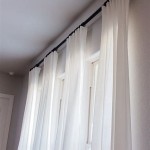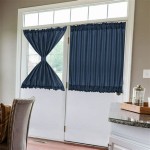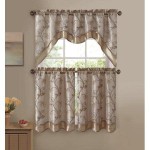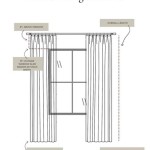Best Fabric for Sheer Curtains: A Comprehensive Guide
Sheer curtains offer a delicate balance between privacy and natural light, making them a popular choice for residential and commercial spaces. Their ability to diffuse sunlight creates a soft, airy ambiance while providing a degree of visual screening. Selecting the right fabric is crucial to achieving the desired aesthetic and functionality. Numerous factors influence the ideal fabric choice, including light filtration, privacy level, durability, maintenance requirements, and overall cost. This article explores the most suitable fabrics for sheer curtains, detailing their characteristics and benefits.
Understanding the Properties of Sheer Fabrics
Before diving into specific fabric types, understanding the key properties that define sheer fabrics is essential. These properties directly impact the performance and appearance of the curtains.
Transparency: The most defining characteristic of sheer fabric is its high level of transparency. This allows a significant amount of light to pass through, creating a bright and airy atmosphere. The degree of transparency varies depending on the weave and fiber composition. Some fabrics offer a more diffused light, blurring the view from the outside, while others provide a clearer view with minimal obstruction.
Drape: The drape refers to how the fabric falls and folds. A good drape is crucial for sheer curtains, as it contributes to the overall aesthetic appeal. Fabrics with a soft, flowing drape create an elegant and sophisticated look, while stiffer fabrics may appear less refined. The fiber content and weave influence the drape. Natural fibers like linen and silk tend to have a more fluid drape compared to some synthetic fibers.
Durability: Sheer fabrics, by nature, are often delicate. However, durability is still a consideration, especially if the curtains will be exposed to direct sunlight or high traffic areas. Fabrics with a tighter weave and stronger fibers will generally be more durable. Proper care and maintenance can also significantly extend the lifespan of sheer curtains.
Maintenance: Sheer curtains, like all window treatments, require regular cleaning to maintain their appearance and hygiene. The ease of maintenance varies depending on the fabric type. Some fabrics can be machine-washed, while others require dry cleaning. Understanding the care instructions is crucial to avoid damaging the fabric during cleaning.
Cost: The cost of sheer fabrics varies widely, depending on the fiber content, manufacturing process, and brand. Natural fibers like silk and linen are generally more expensive than synthetic fibers like polyester. The complexity of the weave and any added embellishments also contribute to the overall cost.
Top Fabric Choices for Sheer Curtains
Several fabric options are well-suited for sheer curtains, each offering unique characteristics and benefits. Evaluating these options based on specific needs and preferences is crucial for making the right choice.
Polyester: Polyester is a widely popular choice for sheer curtains due to its affordability, durability, and ease of maintenance. It is a synthetic fiber that is resistant to wrinkles, shrinking, and fading. Polyester sheer fabrics are often machine-washable and require minimal ironing, making them a practical option for busy households. The drape of polyester can vary depending on the weave and treatment, but generally, it offers a decent flow. While it may not possess the same luxurious feel as natural fibers, polyester provides a cost-effective and reliable solution for sheer curtains. Furthermore, polyester can be woven to mimic the look of more expensive natural fibers, offering a budget-friendly alternative.
Nylon: Nylon, another synthetic fiber, is known for its strength and elasticity. While not as common as polyester for sheer curtains, nylon offers excellent durability and resistance to mildew and moths. Nylon sheer fabrics can be a good choice for areas with high humidity or potential pest problems. They are also relatively easy to care for, although they may be more prone to static cling than polyester. The drape of nylon can be somewhat stiffer than polyester or natural fibers, but this can be mitigated by selecting a lightweight nylon weave.
Linen: Linen is a natural fiber derived from the flax plant. It is prized for its unique texture, breathability, and elegant drape. Linen sheer curtains offer a sophisticated and airy look, allowing ample light to filter through while providing a degree of privacy. Linen is a strong and durable fiber, but it is also prone to wrinkling. Linen sheer curtains will likely require ironing or steaming to maintain a crisp appearance. Linen is a more expensive option than synthetic fibers, but its natural beauty and luxurious feel make it a worthwhile investment for many. The inherent slubs and imperfections in linen add to its character and charm, creating a relaxed and organic aesthetic.
Cotton: Cotton is a versatile and widely available natural fiber. Cotton sheer fabrics are soft, breathable, and relatively affordable. They offer a good balance between light filtration and privacy. Cotton is easy to dye, allowing for a wide range of color options. However, cotton is prone to shrinking and wrinkling, and it may fade more quickly than synthetic fibers when exposed to direct sunlight. Cotton sheer curtains typically require ironing or steaming to maintain a neat appearance. While less luxurious than linen or silk, cotton provides a comfortable and practical option for sheer curtains.
Silk: Silk is a luxurious natural fiber known for its exquisite drape, sheen, and soft texture. Silk sheer curtains create an elegant and sophisticated ambiance, adding a touch of glamour to any room. Silk is a delicate fabric that requires special care. Silk sheer curtains are typically dry-cleaned to avoid damage. They are also more susceptible to fading and water stains than other fabrics. Silk is a more expensive option, but its unparalleled beauty and luxurious feel make it a desirable choice for those seeking a high-end look. The shimmering quality of silk adds depth and dimension to the curtains, creating a captivating visual effect.
Voile: Voile is a lightweight, semi-sheer fabric typically made from cotton, polyester, or a blend of both. It is characterized by its fine weave and soft drape. Voile sheer curtains offer a delicate and airy look, allowing ample light to filter through while providing a degree of privacy. Voile is relatively easy to care for, and it is available in a wide range of colors and patterns. It is a versatile and affordable option for sheer curtains, suitable for various decorating styles. The open weave of voile allows for good air circulation, making it a comfortable choice for warmer climates.
Lace: Lace is a decorative fabric characterized by its intricate patterns and openwork design. Lace sheer curtains add a touch of romance and elegance to a room. The level of transparency varies depending on the complexity of the lace pattern. Some lace sheer fabrics offer a greater degree of privacy than others. Lace can be made from various fibers, including cotton, linen, and synthetic blends. Lace sheer curtains require delicate handling and may need to be hand-washed or dry-cleaned. The intricate details of lace create a visually stunning effect, adding texture and dimension to the window treatment.
Considerations for Choosing the Right Sheer Fabric
Beyond the basic properties and available options, several additional factors should be considered when selecting sheer fabrics for curtains.
Light Control: Determine the desired level of light filtration. Lighter, more transparent fabrics will allow more light to pass through, while denser weaves will provide more diffused light. Consider the direction of sunlight and the time of day when the curtains will be exposed to the sun.
Privacy Needs: Assess the required level of privacy. If privacy is a major concern, opt for a denser weave or a fabric with a slight texture to obscure the view from the outside. Layering sheer curtains with heavier drapes or blinds can provide additional privacy when needed.
Room Aesthetics: Choose a fabric that complements the overall style and decor of the room. Consider the color, texture, and pattern of the fabric in relation to the existing furniture, walls, and flooring. Sheer curtains should enhance the room's ambiance and create a cohesive look.
Maintenance Requirements: Evaluate the ease of care for each fabric. If convenience is a priority, opt for machine-washable fabrics like polyester or cotton. If you are willing to invest more time and effort, consider delicate fabrics like silk or linen, which may require dry cleaning or special handling.
Budget Constraints: Set a budget and choose a fabric that fits within your financial means. Synthetic fibers like polyester and nylon are generally more affordable than natural fibers like silk and linen. Consider the long-term cost of maintenance, as some fabrics may require more frequent cleaning or repair.
Sun Exposure: Consider the amount of direct sunlight the curtains will receive. Fabrics that are prone to fading, such as cotton and silk, may not be the best choice for areas with intense sun exposure. Opt for fade-resistant fabrics like polyester or linen, or consider adding a lining to protect the fabric from sunlight.
By carefully considering these factors and evaluating the available fabric options, individuals can select the ideal sheer fabric to achieve the desired aesthetic, functionality, and longevity for their curtains.

Sheer Curtain Fabric Types Guide Find Your Perfect Match

Ultimate Guide To Sheer Curtain Fabrics 5 Minute Blinds

Modern Sheer Curtains Semi Main Drapes

Sheer Curtains What To Look For Is The Best Choice

Diffe Types Of Fabrics Used For Curtains Voila Voile

Ultimate Guide To Sheer Curtain Fabrics 5 Minute Blinds

Curtain Sheers Capture A Delicate Look The Shade

What Are The Best Fabrics For Durable Sheer Curtains

Modern Sheer Curtains Semi Main Drapes

What Fabric Choices Are Best For Sheer Curtains A Deep Dive








